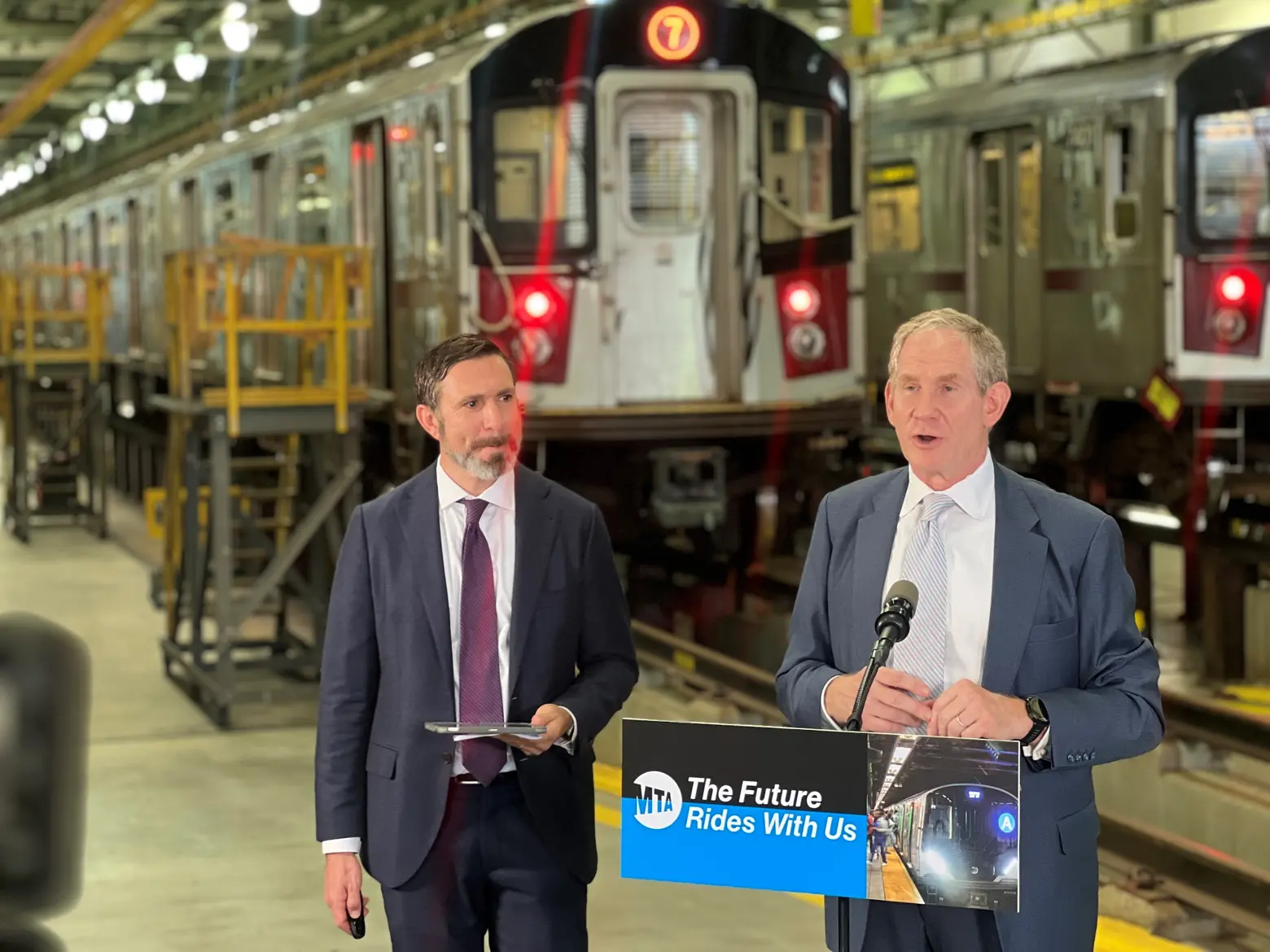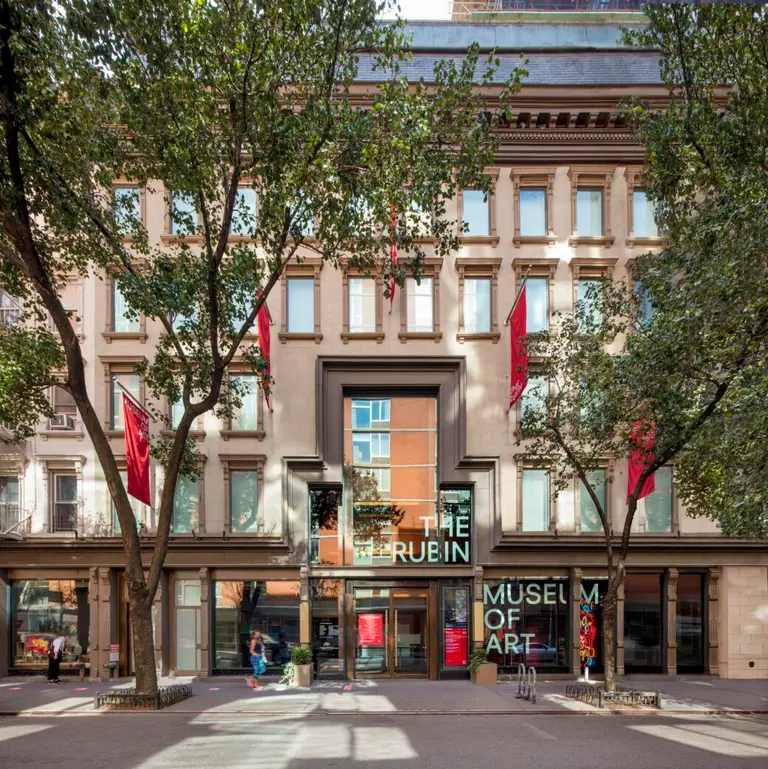MTA unveils $68B capital plan to keep NYC transit system afloat

Credit: Ray Raimundi/MTA on Flickr
The Metropolitan Transportation Authority (MTA) on Wednesday released a $68.4 billion capital plan for 2025-2029 mapping out ways to improve the transit system. The plan, “The Future Rides with Us,” focuses on maintaining New York City’s aging subway system by funding new train cars, improving deteriorating stations, and modernizing the signal system to ensure frequent and reliable service for New Yorkers. Nearly half of the funding remains uncertain, largely due to a $15 billion gap in the current capital plan caused by Gov. Kathy Hochul’s indefinite pause on congestion pricing.
MTA Chief Financial Officer Kevin Willens announced that the agency plans to issue $10 billion in MTA bonds to help finance the 2025-2029 capital plan. Willens also noted that the MTA expects around $21 billion from federal funding and state and city bonds, but has not released specific amounts as the sources have yet to be approved, according to AMNY.
A third-party evaluation by JP Morgan found that for the MTA to maintain a capital investment level comparable to private industry peers, the agency would have to invest $23 billion a year—more than twice its already accelerated rate.
A separate report by State Comptroller Thomas DiNapoli, released last week, estimated that the MTA’s next five-year plan could cost up to $92.2 billion, not accounting for the $15 billion gap left by the absence of congestion pricing.
While the plan includes major upgrades for accessibility, customer experience, and technology developments, it focuses primarily on areas needing urgent investment.
One key priority is updating the aging train fleet. Train cars generally have a 40-year lifespan, and when kept in service, can cause breakdowns and delays that have cascading effects throughout the system. Currently, two subway car models, the R62 and R68, along with the M3 railroad model, are reaching the “end of their useful life,” as the MTA describes.
To address this issue, the MTA will purchase 2,000 new railcars at a cost of $10.9 billion over the next five years, including 1,500 new subway cars to replace the R62 and R68, and 500 new railroad cars to replace the M3.
Another key aspect of the plan is upgrading the subway’s outdated signal system. At an estimated cost of $5.4 billion, the MTA will replace the old signals with Communications-Based Train Control (CBTC) technology on over 75 miles of track, improving speed and reliability.
The lines targeted for modernization include the Broadway N, Q, R, and W, the Liberty Avenue A, the Rockaway A and S, and the Nassau Street J and Z. According to the MTA, lines with CBTC have seen a 90 percent increase in service reliability.
The MTA’s plan also calls for $9 billion in critical infrastructure repairs for more than 40 railroad bridges and subway tunnels that service the A, C, B, D, F, G, N, and R lines.
According to the agency, half of the elevated structures in the subway system have a high concentration of defects, or are in poor or marginal condition compared to 29 percent of subway tunnels, 24 percent of Long Island Rail Road viaducts, and 46 percent of Metro-North bridges, as reported by AMNY.
The plan also seeks to make accessibility upgrades to at least 60 more subway stations, in addition to the 23 projects that were halted due to the pause on congestion pricing. If all of those projects are completed, half of all city subway stations would be accessible, keeping the MTA on track to reaching its legal requirement of making 95 percent of the system accessible by 2055.
Additionally, the plan calls for redesigning and rebuilding the Livonia and 240th Street shops, which service trains that run on the 1, 3, and 42nd Street Shuttle lines.
“This Capital Plan was developed by the most comprehensive analysis the MTA has ever undertaken to truly understand the needs of the system, the challenges and opportunities,” MTA Chair and CEO Janno Lieber said.
“After years of underinvestment, more than 90% of this proposed plan – the largest in MTA history – focuses on bringing the system to a state of good repair. These investments are necessary to serve the following generations and the future of the region’s economy, environment, and social and economic equity.”
While the plan focuses on addressing the transit system’s most urgent needs, it still sets aside $2.75 billion for the design and preliminary work on the Interborough Express. Proposed by Hochul, the project would transform the existing freight-rail Bay Ridge branch into a 14-mile light rail line linking numerous Brooklyn and Queens neighborhoods with limited transit access.
The plan also dedicates $1.1 billion over the next five years to installing new fare gates at 150 stations, aimed at reducing fare evasion while improving accessibility.
MTA Construction & Development President Jamie Torres-Springer is confident that the state government will restore the $15 billion in funding that would’ve been provided by congestion pricing, as reported by AMNY.
Torres-Springer noted that funding generated from congestion pricing made up roughly 27 percent of the 2020-2024 capital plan and that several transit projects are on hold until funding is restored.
Hochul has promised to review the MTA’s 2025-2029 capital plan and fight to secure as much funding as possible, including by pressuring Washington to deliver additional funds and by working with partners in the legislature and City Hall to determine priorities during upcoming budget negotiations, according to AMNY.
The MTA board will vote on the plan at its board meeting on September 25. Once approved, the capital plan must be submitted to the MTA Capital Program Review Board by October 31, which has 30 days to review and approve it.
In mid-October, the MTA will host a series of open houses around New York and launch a public education campaign to inform New Yorkers about the capital plan.
RELATED:
Get Insider Updates with Our Newsletter!
Leave a reply
Your email address will not be published.





























Governor Hochul claims she can find additional state and federal funding to make up for the missing $15 billion in Congestion Pricing. She promises the same for making up the $33 billion shortfall in the proposed MTA $68 billion 2025 – 2029 Five Year Capital Plan. This leaves the MTA with a $48 billion shortfall in funding!
The MTA will receive $1.8 billion in annual formula grants supplemented by competitive discretionary grant program allocations from the Federal Transit Administration in federal fiscal year 2024. This might grow by several hundred million annually over the next five years.
The Federal Highway Administration has funding over several programs including Congestion Mitigation Air Quality, Surface Transportation Program and others which can be transferred to FTA to finance MTA capital projects. There are no other federal pots of gold to cover the missing $48 billion shortfall between the missing Congestion Pricing and 2025 – 2029 Five Year Capital Plan.
Past Governor’s and State Legisatures have never provided any hard cash close to $48 billion in paying for previous MTA Five Year Capital Plans. Don’t be surprised in 2025 when both the Governor and State Legislature reduce the proposed $68 billion plan by billions to some amount in the 50’s billion range.
When it comes to MTA financing, Governor Hochul reminds me of the old cartoon character Wimpy. He was fond off saying, “I’ll gladly pay you on Tuesday for a hamburger today,” or in this case $48 billion worth of MTA capital transportation projects. .
(Larry Penner is a transportation advocate, historian and writer who previously served as a former Director for the Federal Transit Administration Region 2 New York Office of Operations and Program Management.. This included the development, review, approval and oversight for billions in capital projects and programs for New York Metropolitan Transportation Authority NYC Transit bus, subway and Staten Island Railway, Long Island and Metro North Rail Roads, MTA Bus, NJ Transit along with 30 other transit agencies in NY & NJ.
[…] the project still faces funding risks, as nearly half of the MTA’s $65.4 billion 2025-2029 capital budget is unfunded. The budget allocates $2.75 billion for the […]